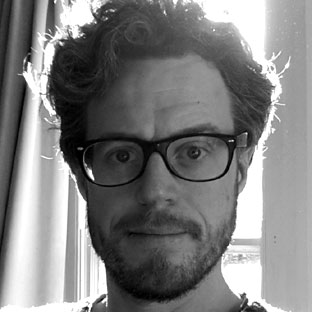When helping to shape a city’s identity through heritage how do we ensure that we safeguard the past, whilst facilitating the future? First, we make sure that the future is driven by the people who live and work in that city.
Bill Hillier, Professor at UCL Bartlett School of Architecture, once said (and I paraphrase slightly) ‘The greatest puzzle about the city is what we mean when we say ‘Boston’, ‘London’ or ‘Sydney’”. Cities present themselves as unique kind of place that despite their obvious constant change, they maintain a specific identity. A city with a clear identity can help people to feel attached to the place they live, but also helps the ‘image of the city’ - as a business hub, a place for academic excellence, or a design capital - to be communicated globally; attracting tourists and businesses. At the RSA we are exploring the contradictions and benefits of heritage led place making.
One key contradiction noted is the importance of ‘safeguarding the past whilst also facilitating the future’ – a tension between (re) development and conservation felt around the world. With UK cities gaining new governmental powers, the shaping of city-wide place strategy becomes more crucial. How will they balance communicating a clear identity to the global market, attracting developers and businesses, whilst making sure that they do not lose their unique identity? How do we balance the heritage of the past with the vision of the future?
One way might be to understand that cities, despite the apparent simply identity indicated by a google image search, do not have a pearl of identity that makes them ‘authentically unique’. Typing ‘London’ into google will gain you pictures of the London Eye, Big Ben, the River Thames and the City. Despite their internationally recognised forms, none of these icons are sufficient to encapsulate the city – they are helpful symbols; they stand for the whole. But cities, like all places, are constructed by the people, events and processes that go on in those locations every day. If places want to build a clear identity, driven by the importance of their past, it must come from the very people who live and work there.
Place shaping requires community engagement and without that you risk a top down branding programme that alienates local groups. Instead we should be engaging the groups giving them ownership of the programmes and helping them to shape the city brand. In the case of industrial heritage regeneration may start to feel like processes of ‘mythification’ and are rejected by the local communities who do not feel connected to such, often globally accepted, identification. Heritage regeneration can feel like global homogenisation – a process where uniqueness is lost in the need to appeal to themes recognisable to a global market.
The RSA’s own focus on the ‘Power to Create’ reminds us that such place-shaping activities are in the hands of the individuals and organisations that care the most, and as such the heritage led regeneration should emerge from their work. At a city level, and for organisation such as the Heritage Lottery Fund and the RSA, we can facilitate such integration strategies for equally integrated socio-economic benefit. As the RSA’s Rowan Conway recently suggested, we need to step away from a hierarchical model and allow a more networked, integrated, approach.
Community integrated, heritage led, projects have a diverse history. As Jonathan Schifferes recently pointed out, proof of economic benefit is limited – but in the last few years there have been a number of projects that have used heritage to aid development, attract investment and regenerate important tangible heritage for future generations. Such developments substantially increase the character of the cities through their historic urban landscape. Yet before regeneration plans can really start, there should be ‘full and proper understanding of local character and distinctiveness’.
By contrast, it is not enough to simple take a peace of tangible, so called ‘Hard H’ heritage, and conserve its memory as a museum. The regeneration of heritage should be respectful of the past but making spaces for those inhabitants of the city to use. Yet not all pieces of tangible heritage are suitable for adaptive reuse; at times such a focus can create more problems than it solves (as at Smithfield General Market). Regeneration projects, in trying to craft the unique, need allow flexibility to change. Since we are unable to predict what happens in these complex adaptable systems we call cities, it becomes vital that regeneration of buildings, streets, parks and waterfronts should focus on multiple functionality – facilitating adaptive future use.
This means more than paying lip service to local voice, and instead calls for a strong engagement with the communities involved and getting them to help set the tone and use of the future development. Rather than a ‘consultation period’ with local groups (one that ultimately ends), the project should be fully integrated with such groups at every level. This requires full community engagement from the beginning, with leading groups being part of the working groups that would also include the architects, planners and all local and national level departments required for the programme. Such initiates call for community approval, and ultimately ownership, of the project as it is this way that the benefits of place-shaping and place-attachment will be felt beyond national commercial activity.
On brand new developments, such as Regent’s Place in Camden, a partnership over two decades between council, developer and nearby residents has linked shiny new buildings to long-established community aspirations, providing facilities including a theatre space. Deep engagement can not only improve the attachment of people to their own heritage, but aid the communication of that heritage and its relationship to contemporary identity and the brand new facets of city-building. It is this integration that helps benefits be felt by local communities and the local economy.
Heritage led regeneration does not require a nostalgic look at the past, nor does it have to limit the size or scope of the project. What it does have to do is be part of an integrated engagement in place-shaping that encompasses uniqueness, facilitates multiple use over time - ultimately supporting the resilience of buildings, places and whole cities.
Dave is a Research Associate at the RSA and you can follow him on twitter at @dred101
Related articles
-
What is our future heritage: Bath
Laura Brown
Follow up from a Fellow led event discussing heritage in the world heritage city of Bath
-
Blog: I love Dundee
Jamie Cooke
I love Dundee. It’s funny, but even in the world of today where Dundee is vibrant with the development of the V&A and waterfront, its status as a UNESCO City of Design and top place in our very own Heritage Index for Scotland, this is a statement that can be met with a range of responses ranging from ridicule to incredulity, especially in the Central Belt of Scotland.
-
Blog: A driverless car dystopia? Technology and the lives we want to live
Anthony Painter
We are facing a wave of new technological innovation. Why is our public debate about what this might mean for us so quiet?



Be the first to write a comment
Comments
Please login to post a comment or reply
Don't have an account? Click here to register.